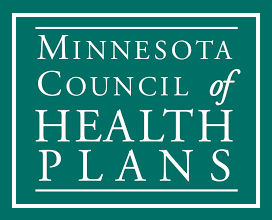New report shows no new state money needed to keep helping people who buy their own insurance in 2020
That means there is enough money left over to extend the help into 2020 and 2021.
Jim Schowalter, president of the Minnesota Council of Health Plans, said this is great news because the Minnesota Premium Security Program, also known as reinsurance, helped reduce premiums paid each month by people who buy their own insurance by 20 percent on average in 2018 and again in 2019. Without legislative action to extend the program, premiums will go up this fall.
Program got results at half the expected cost
This week, numbers presented to the group that’s overseeing the program showed just 50 percent of the $271 million set aside will be needed for 2018 medical bills. Insurance experts at Wakely Consulting Group said $120.5 million in medical bills have come in through as of December 31, 2018. The company projects another $18.4 million will be needed for care that wasn’t billed by the end of the year, bringing the total expense for last year to $138.9 million.
In all, about 155,000 people across the state bought health insurance on their own in 2018. (See page two for a breakout of expenses by area of the state.)
Reinsurance pays high medical bills, so people don’t
Every spring, health insurers ask the state to approve health insurance premiums for the coming year. Premiums for 2018 and 2019 didn’t include all expected medical bills for people who buy their own insurance. That’s because when a person’s medical bills are between $50,000 and $250,000, the state pays about 80 percent of the expense using reinsurance funds.
“There’s no doubt reinsurance is a success. But some people do have doubts about whether it should continue. The answer is yes,” Schowalter said. Here’s why:
- No new money is needed. The legislature appropriated $271 million in state funds per year to pay for reinsurance 2018 and 2019. Knowing that just $138.9 million was spent in 2018 should relieve policymakers’ concerns about how to fund the help in 2020 and 2021.
- It brings federal money to Minnesota. The federal government contributed $131 million to the program for 2018 and an estimated $84 million in 2019. That means actual state expenses for the 2018 program were about $7.9 million, not the $271 million budgeted.
- It already has federal approval. Federal regulators approved the plan through 2022—but state law only allows the program through this year.
”Premiums for 2020 are being calculated now,” Schowalter said. “The people at health insurance companies who put together rates need to know whether the state will help pay part of expensive medical bills or if people who buy their own insurance have to foot the entire bill.”
Here’s what 2018 Premium Security Program (reinsurance) expenses look like across the state,
as of Dec. 31, 2018:
| Rate Pricing Area for People Who Buy Their Own Insurance | Counties | Medical Bills to Be Paid by Reinsurance | % of Program Expense |
| Region 1 | Dodge, Fillmore, Freeborn, Goodhue, Houston, Mower, Olmsted, Steele, Wabasha, Winona | $12 million | 10% |
| Region 2 | Carlton, Cook, Itasca, Koochiching, Lake, Lake of the Woods, St. Louis | $7 million | 6% |
| Region 3 | Blue Earth, Faribault, Waseca, Le Sueur, Martin, Nicollet, Rice, Watonwan | $7 million | 6% |
| Region 4 | Brown, Cottonwood, Jackson, Lincoln, Murray, Nobles, Pipestone, Redwood, Rock | $4 million | 3% |
| Region 5 | Big Stone, Chippewa, Kandiyohi, Lac Qui Parle, Lyon, McLeod, Meeker, Renville, Sibley, Swift, Yellow Medicine | $5 million | 4% |
| Region 6 | Becker, Clay, Douglas, Grant, Otter Tail, Pope, Stevens, Traverse, Wilkin | $5 million | 4% |
| Region 7 | Aitkin, Beltrami, Cass, Chisago, Crow Wing, Hubbard, Isanti, Kanabec, Mille Lacs, Morrison, Pine, Roseau, Todd, Wadena | $9 million | 8% |
| Region 8 | Anoka, Benton, Carver, Dakota, Hennepin, Ramsey, Scott, Sherburne, Stearns, Washington, Wright | $69 million | 57% |
| Region 9 | Clearwater, Kittson, Mahnomen, Marshall, Norman, Pennington, Polk, Red Lake | $2 million | 2% |
-30-
